Have you ever wondered what the lovechild of a Monstera and a succulent might look like?
Look no further because that is what the Monstera Peru embodies with its prolific growth, stunning foliage, and rubbery, almost leather-like leaves.
The unofficial species name of this plant is karstenianum (try saying that five times fast), but it’s not widely accepted. So you can go ahead and forget about ever trying to pronounce that properly…
As a hemiepiphytic vine, Monstera Peru is a super versatile species, able to climb, trail and basically look fabulous in any home or terrarium large enough to house it.
Read on to find out how to get the best from this unique plant!
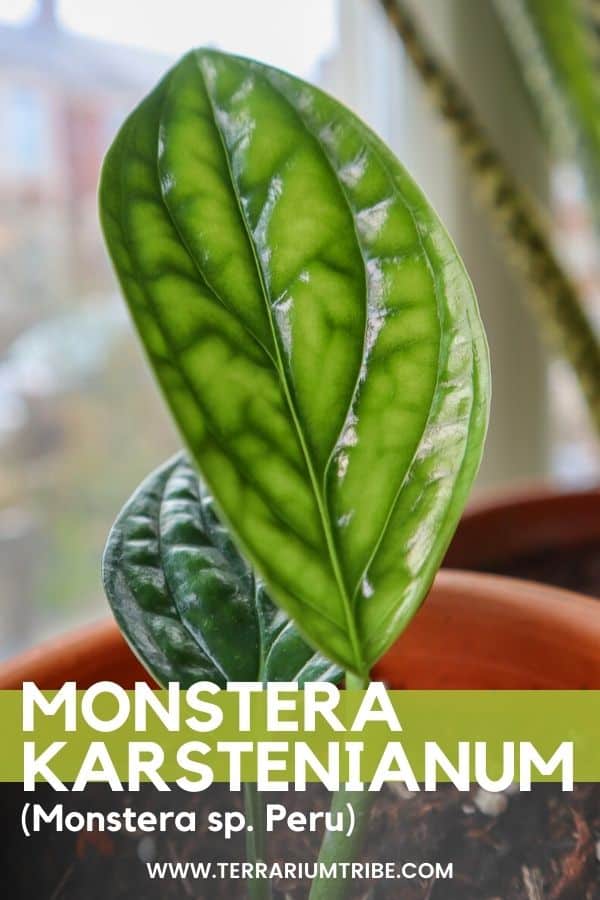
What is the Monstera Peru? (Hint: it’s Really Cool)
Named “Peru” for where it’s natively found (duh), this species was considered very rare not too long ago. These days, they’re not too difficult to find, and they’re pretty affordable.
They’re really prized for their foliage, as they really have a fascinating mix of qualities.
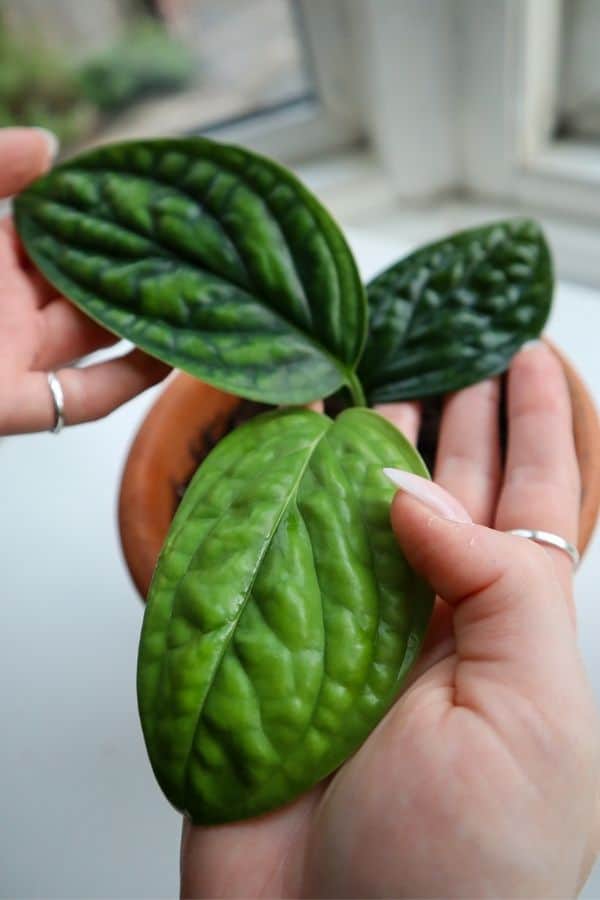
With pronounced venation and furrowed leaves in a deep emerald color, it looks somewhat like a vine version of a Crocodile Fern.
Honestly, I dig it.
It doesn’t look like a typical Monstera by any means, but it’s one of the most unique-looking plants I’ve ever seen.
Where to Buy Monstera Peru
See the links below to purchase from reputable terrarium plant shops and marketplaces (may include affiliate links).
Monstera Peru Care & Growth
At a Glance
| Plant Type | Vine, foliage |
| Lighting | Moderate, indirect light |
| Temperature | 55-80°F (13-27°C) |
| Watering | Moderate, even moisture |
| Humidity | Moderate humidity (50-70%) |
| Growth | 6-36 inches (can grow up to 12 feet!) |
Light Requirements
In the Peruvian rainforest, Monstera karstenianum has evolved to thrive in the diffused and filtered sunlight that shines through the forest canopy.
If you’re not lucky enough to have a forest canopy in your own home… you can achieve the same bright indirect lighting conditions by placing the plant either a couple of meters from a direct light source, behind some blinds/screen, or you can make your own jungle terrarium (my personal favorite)!
North-facing windowsills will be ideal for most homes, though the succulent-like leaves of Monstera Peru are more robust than most and can handle sporadic direct sunlight.
So, an East facing window should work too, where they’ll receive some softer early morning sunlight.
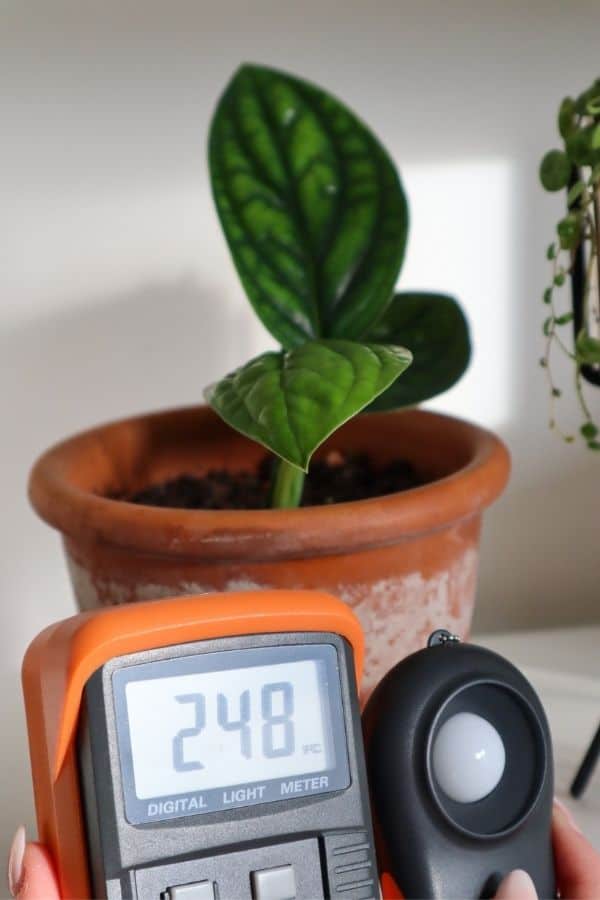
Darker green leaf coloration typically suggests a plant can handle low light conditions, so this Monstera vine can be quite forgiving, but it’s not really one to thrive in the shade.
Watering
Despite being a tropical plant, the thick, waxy leaves of the Monstera Peru hint at its ability to retain water for long periods of time.
This paired with the fact that it’s a hemiepiphytic vining species (it climbs, but still plants shallow roots in the soil for support) means it’s used to getting quickly drenched and dried in the wild – not sat in the wet pot of an over-eager plant lover.
For us at home, this typically means the plant needs to be watered less than its tropical cousins (even within the Monstera genus).
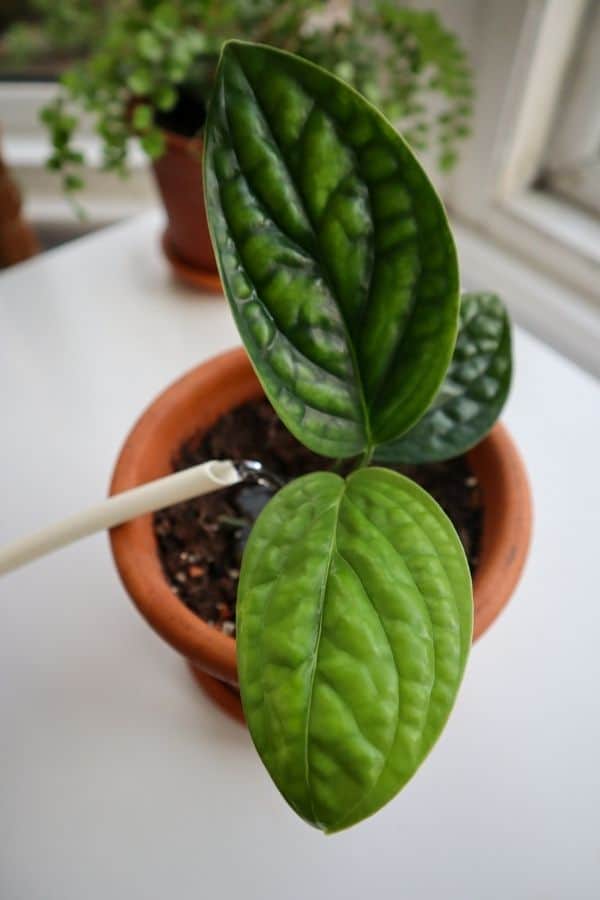
You can let it dry out significantly between waterings without any issues; just look out for its normally stiff leaves beginning to curl.
Within a closed terrarium, it’s probably best paired with other drought-tolerant species so you can more easily maintain a moisture level consistent with its needs.
Though it’s seemingly not overly prone to root rot, it’ll just yellow and drop leaves if over-watered.
Substrate / Soil
As with any plant that dabbles in the epiphytic lifestyle, Monstera Peru prefers well-draining, breathable soil mixtures that can really provide some airflow around the roots.
That being said, the shallow roots of this vine likely won’t reach too far into the substrate, so you’ll want something that can retain moisture too.
Coco coir makes for an excellent substrate base with its spongy, fibrous texture and water-retentive capacity. You can supplement with the likes of orchid bark, pumice, or perlite for extra drainage and aeration.
Temperature & Humidity
Monstera karstenianum are not fans of the cold and, if it were ever a human, would probably be a snowbird.
Personally, I can relate…
As you might imagine, from a plant that naturally grows in rainforest-like conditions, it’s happy to soak up all the warmth and humidity it can get – so it will love terrarium conditions.
That being said, it’ll do absolutely fine with most household conditions.
Just keep it away from cold drafts and such. If you’re too cold, it’s probably too cold.
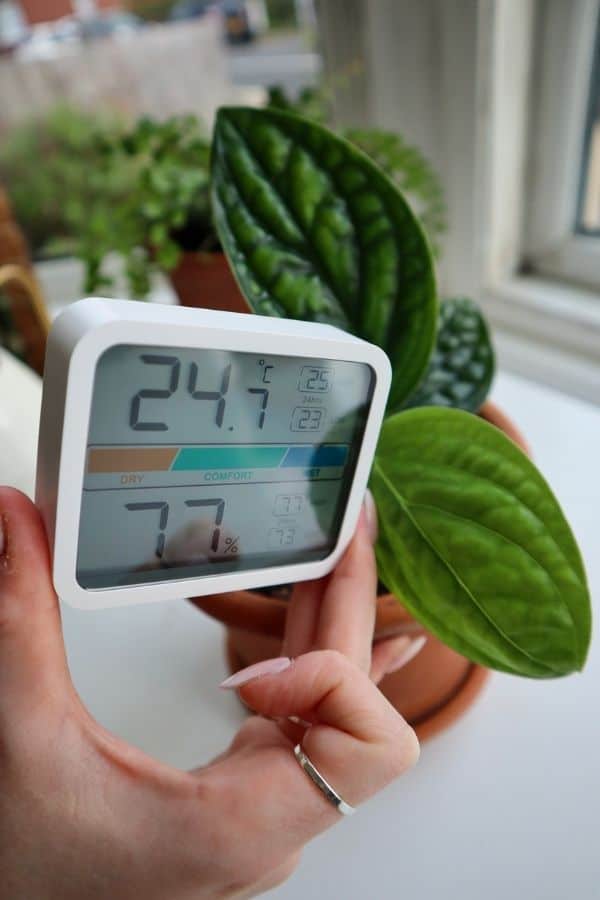
Growth
The Latin word Monstera means “monstrous,” and that absolutely applies to the growth of karstenianum. If given enough space, this fast grower can climb up and attach to trees as high as twelve feet.
So, if you give this baby a moss pole or hardscape branch to climb you’re in for a treat. It’ll also happily live as a trailing plant. It’s easygoing like that.
The versatility of Monstera Peru makes a gorgeous addition to a home or tropical terrarium, just bare in mind you’ll likely have to regularly trim it back.
But having too much Monstera isn’t the worst problem to have, now, is it?
Monstera Peru Propagation
Stem cutting is the best method to propagate your Monstera karstenianum, and while it can take a while for this plant to root, a little rooting powder can always help.
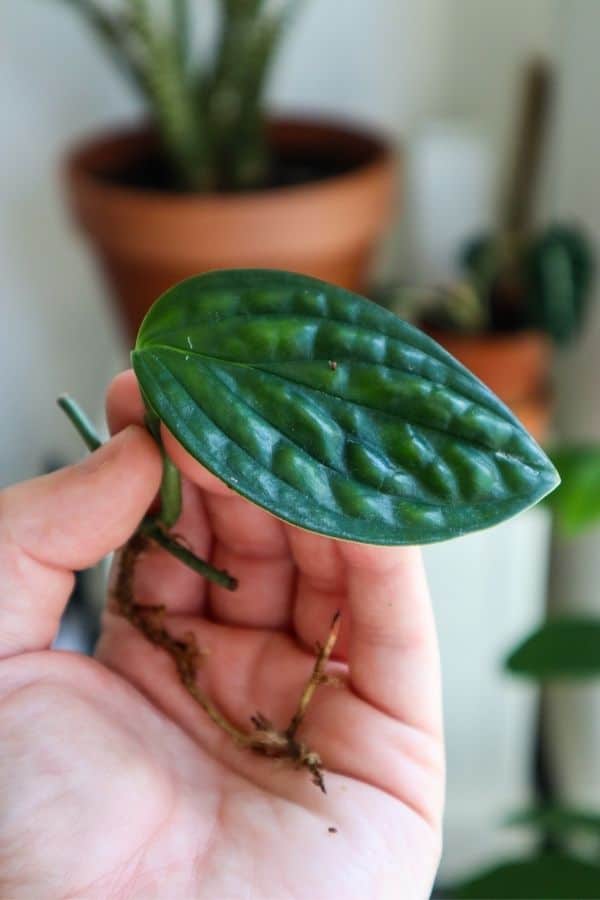
Water propagation tends to be easy (and the least messy).
Just make sure you have several leaf nodes submerged in at least a few inches of water to maximize your chances of new growth.
Once your Monstera Peru has enough roots to go into the soil, plant them with a structure or another plant so it can climb and give it extra humidity to make the transition easier.
In fact, the extra moisture and humidity of a closed terrarium is pretty much the ideal environment for freshly rooted cuttings to grow.
Varieties & Similar Plants
As a member of the Monstera genus, this plant is related to many popular plants.
With its lance-shaped leaves and lack of fenestration, Monstera Peru bears some resemble to a variety of plants:
- Monstera pinnatipartita (in its juvenile form at least) with similarly thick, puckered leaves.
- Monstera siltepecana (though this does eventually produce fenestrations).
- Monstera standleyana.
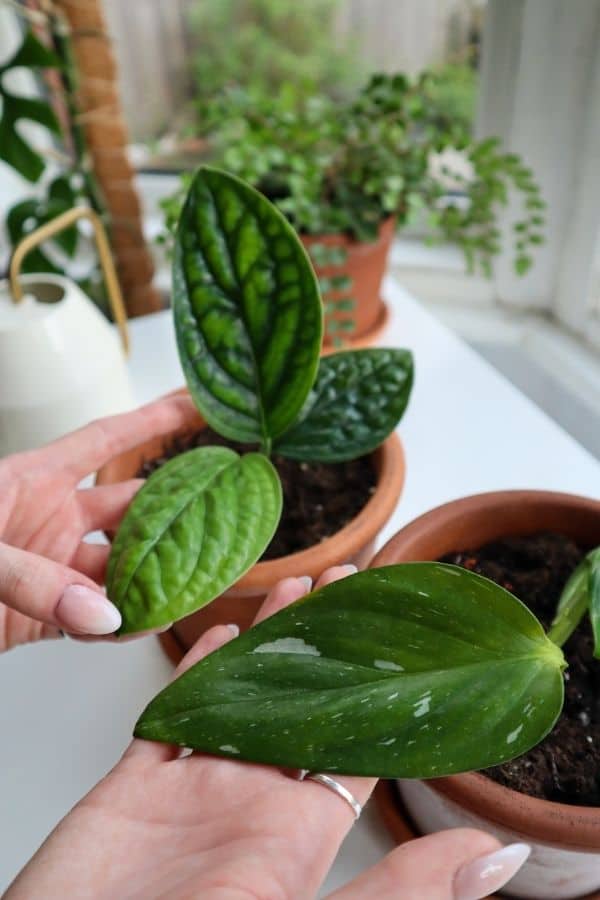
Although it is rare, Perus can occasionally be found with green-white variegation, too!
For more great Monstera plants that do have the more classic split-leaf look, see the Mini Monstera and Monstera Adansonii.
Common Problems
Honestly, Monstera Peru is a pretty low-maintenance plant to care for as long as it is given the proper soil and regular watering.
It’s a versatile plant that will readily grow in the home and in terrariums of all kinds (as long as you have enough space).
Should you see brown spots on this plant baby, it’s most likely due to inconsistent watering, so keep a tight schedule and water only when necessary.
Frequently Asked Questions
Curling leaves are a common sign of underwatering. So, if you see the (usually flat) leaves of Monstera Peru starting to curl, then it’s time to add some more water.
In the past, Monstera Peru has been a rare species. However, these days, they’re easy to get a hold of.
Monsteras do flower in the wild with simple white blooms, but it’s incredibly rare to see in the home. I’ve never seen an example of Monstera Peru flowering.
